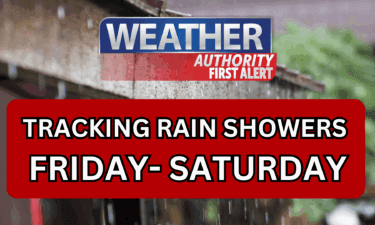Aurora Lights Surprise Yuma Residents, Visible Across Imperial County
On the night of Nov. 11 and 12, 2025 residents of Yuma and nearby Imperial County reported seeing the aurora borealis, a rare sight this far south. The event drew community photos and reactions, and NOAA forecasts indicate elevated aurora activity may continue for another night, making local awareness and access to reliable information important.
Listen to Article
Click play to generate audio

Residents across Yuma County and parts of Imperial County looked skyward on the night of Nov. 11 and 12, 2025 as the aurora borealis appeared over the desert, drawing an outpouring of photographs and messages to local news outlets. The lights were visible in images collected by KYMA from local viewers, and prompted surprise and excitement in a community not accustomed to northern light displays.
Meteorological context for the event is straightforward. The aurora occurs when charged particles from the sun interact with Earths atmosphere, exciting gases and producing visible light. National Oceanic and Atmospheric Administration space weather forecasts indicated elevated geomagnetic activity and suggested aurora conditions might persist through the following night, encouraging residents to watch local advisories for updates.
KYMA interviewed a local employee with the National Weather Service who said this was her first time seeing the lights in the Yuma area and that it felt surprising given how far south the display appeared. The personal reaction captured a broader community response that mixed wonder with quiet reflection on an uncommon shared experience.
Beyond the immediate beauty, the event has practical implications for public safety and community resilience. Space weather can in stronger instances affect satellite and radio communications, and monitoring by NOAA and the National Weather Service helps communities anticipate any disruptions. Locally, the sighting underscored the importance of timely, accessible emergency communications for all residents, including people who face language barriers, limited internet access, or transportation challenges that affect their ability to receive alerts or to safely gather outdoors.
Public health officials note that community events centered on natural phenomena can have positive effects for mental health by fostering social connection and a sense of awe. At the same time, local agencies should consider equitable outreach so that enjoyment of such events does not create avoidable safety risks. That includes sharing guidance in multiple languages, reminding people to avoid distracted driving while photographing the sky, and ensuring that public lighting or transportation services do not inadvertently exclude those who want to participate.
The aurora display offered a moment of shared attention across neighborhoods, yet it also highlighted longstanding disparities in how residents access information and public space. Emergency preparedness efforts and public health messaging that account for those disparities can turn rare events like this into opportunities to strengthen community ties and improve systems for every resident.
NOAA and local weather authorities will continue to monitor space weather. Residents who want to follow developments should consult official channels for updates and exercise usual safety precautions when traveling or gathering at night.

